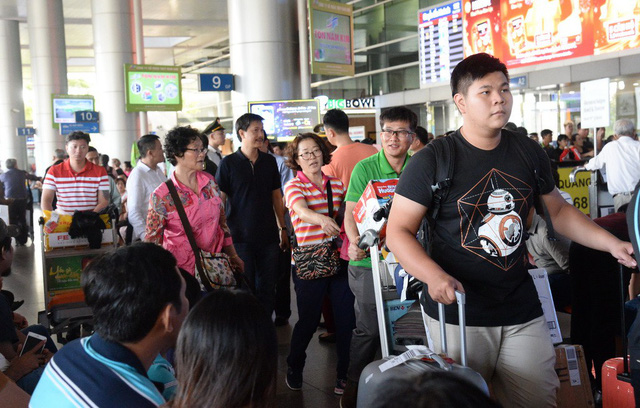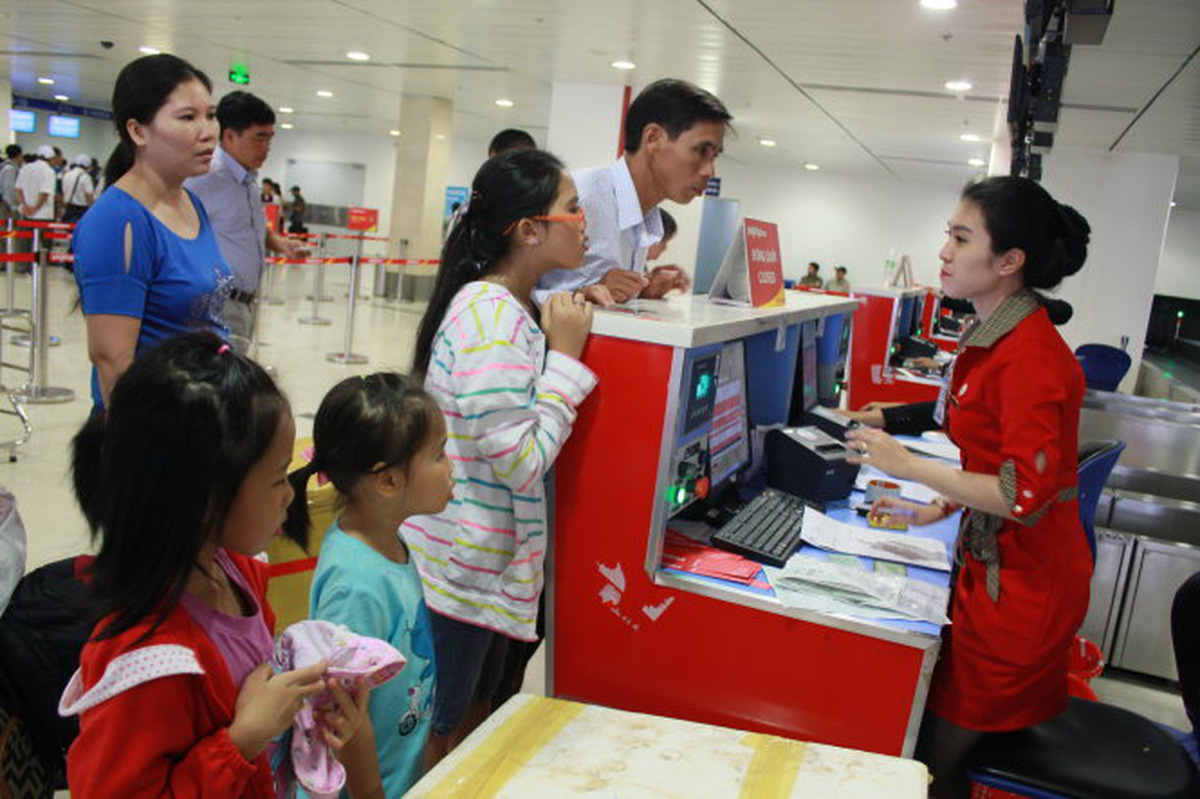Wait for launch of nonstop Vietnam-US flight continues with no end in sight
The wait for direct flights between Vietnam and the U.S. continues as the Vietnamese aviation watchdog still fails to meet the safety assessment standard as required by the U.S. Federal Aviation Administration (FAA).

People arrive at Tan Son Nhat International Airport. Photo: Tuoi Tre
In 2003, Vietnam and the U.S. closed an aviation agreement, allowing airlines to begin nonstop services between the two countries.
Vietnamese passengers were happy with the news, hoping to soon be able to fly directly to the U.S. with a local airline, ending the days of additional time spent transiting with foreign carriers.
In July, the Civil Aviation Authority of Vietnam (CAAV) said it was completing the ‘final review’ to meet the FAA requirements, asserting that it would “surely make it” by the end of September.
The reality proved that this did not happen.
The CAAV admitted to Tuoi Tre (Youth) newspaper earlier this week that “work has yet been done,” meaning passengers, having been waiting for the nonstop Vietnam-U.S. flight for decades, will have to keep waiting.
Transiting a waste of time
Passengers in Vietnam can now choose to fly with foreign carriers, such as American Airlines, Korea Airlines and Singapore Airlines to the U.S., but all of these services have to transit at a third country, extending the time of travel by three to six hours.
Vietnam Airlines does have services to the U.S., but only under a code-share agreement with other carriers. This means people will fly with the Vietnamese flag carrier to a third country, where they have to change aircraft for the service to the U.S.
“It would be no problem if the transiting process takes one to two hours, as tourists can take the chance to explore the airport or do shopping,” Tran Thi Bao Thu, head of media with Fiditour, said.
“But our guests are complaining that arriving at different airports and waiting for transit is a huge waste of time.”
Many other tour organizers also said the lack of a nonstop flight to the U.S. has prevented them from offering more packages or attracting customers.
“Holidaymakers do not want to wait time, and tours with foreign carriers are also more expensive,” a representative of a major travel firm in Ho Chi Minh City said.
Airlines are ready, but…
Low-cost carrier Vietjet has recently announced that it has plans to expand its fleet in preparation for the launch of a nonstop flight to the U.S.
Nguyen Thi Thuy Binh, Vietjet deputy CEO, confirmed to Tuoi Tre that the carrier may add wide-body jets to its fleet to fly to the U.S., but refused to disclose any details.
Vietjet CEO Nguyen Thi Phuong Thao has previously said that the carrier may use Boeing B787s or A350s for the service, with California expected to be the first destination
Vietnam Airlines CEO Duong Tri Thanh has also said the flag carrier may start flying to Los Angeles by late 2019 if the CAAV meets the FAA requirements.
Launching services to the U.S. West Coast is high on the 2016-20 business plan of Vietnam Airlines, according to the executive.
There will be only one ‘technical stop,’ lasting for about an hour in Japan, when the aircraft is refueled and gets in-flight meals, he elaborated.
However, whether those services could be able to launch in 2019 is an issue not in the hands of Vietjet or Vietnam Airlines, but the CAAV’s.

People check in at a Vietjet counter. Photo: Tuoi Tre
No timeline set
A CAAV official told Tuoi Tre that the Vietnamese aviation authority has scored better in the latest technical review by the FAA, compared to the inspection in 2013.
However, FAA has still recommended that CAAV improve a number of issues, the official admitted.
These include the age requirement for aviation employees, the types of aircraft in service, and the adaptation of some new regulations of the International Civil Aviation Organization.
The two most issues that need improvement are the responsibility for safety monitoring and penalty for violations.
“The CAAV is still actively working to meet these standards,” the official said.
The CAAV representative asserted that these are pure technical problems that can be “solved in a short time,” but refused to specify when the authority can get it done./.
VNF/TTO



